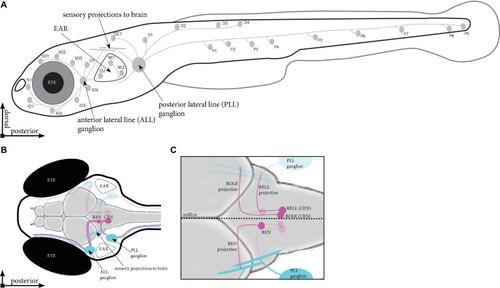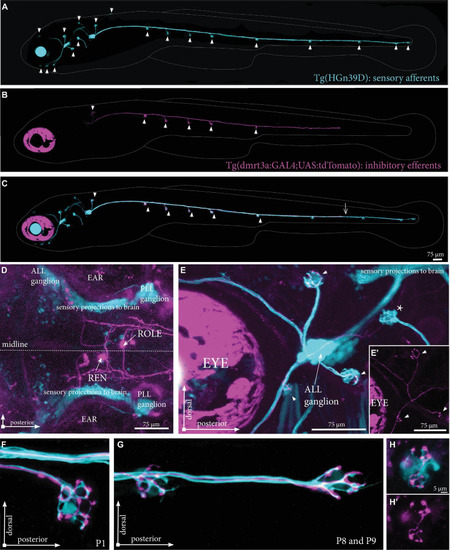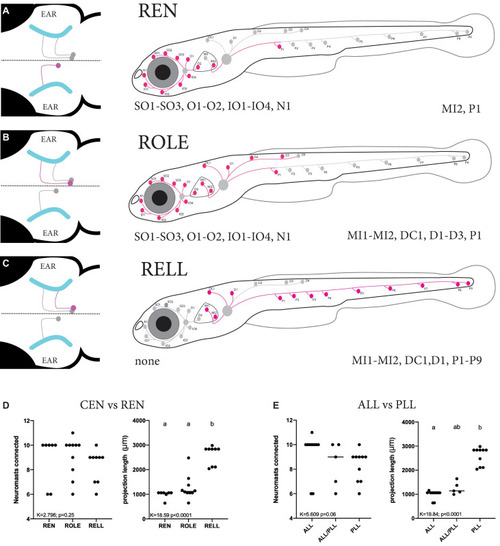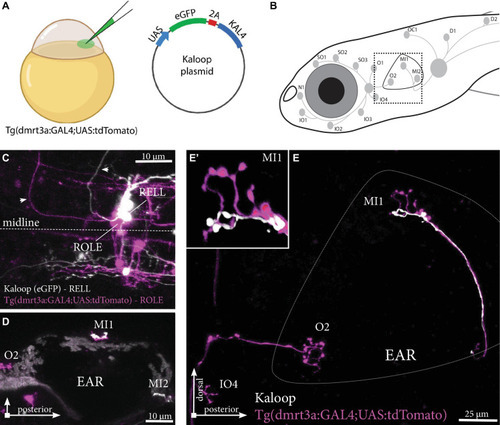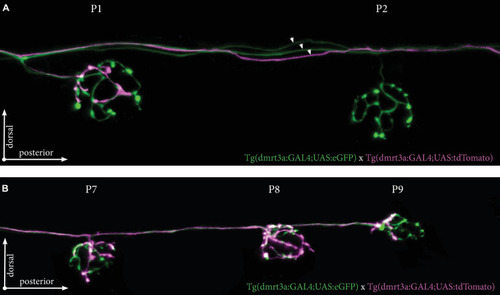- Title
-
Characterization of Individual Projections Reveal That Neuromasts of the Zebrafish Lateral Line are Innervated by Multiple Inhibitory Efferent Cells
- Authors
- Manuel, R., Iglesias Gonzalez, A.B., Habicher, J., Koning, H.K., Boije, H.
- Source
- Full text @ Front. Neuroanat.
|
Schematic overview of the lateral line in zebrafish. |
|
Inhibitory efferent projections to the lateral line in zebrafish larvae. |
|
Projections by single inhibitory efferent cells. |
|
Summary of the projection paths of individual inhibitory efferent cells. |
|
Time-lapse recordings of sensory afferent and inhibitory efferent processes growing along the PLL. |
|
Tg( |
|
Tg( |

